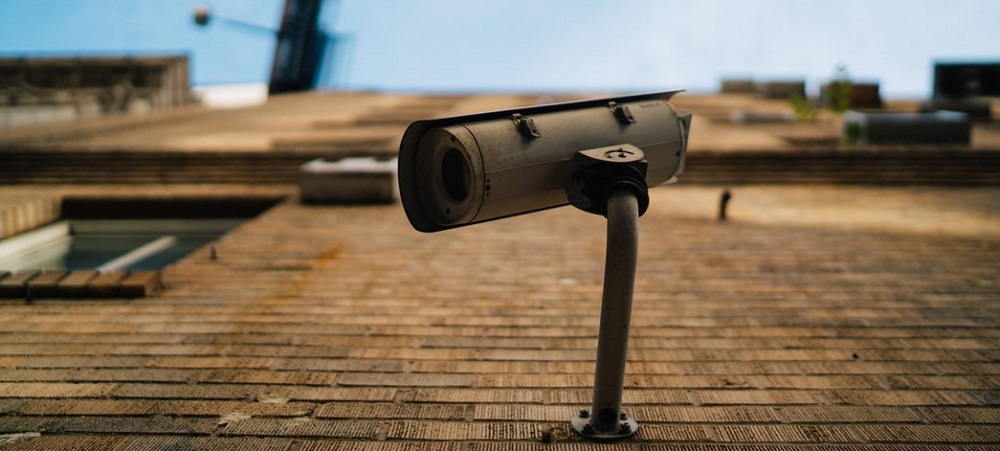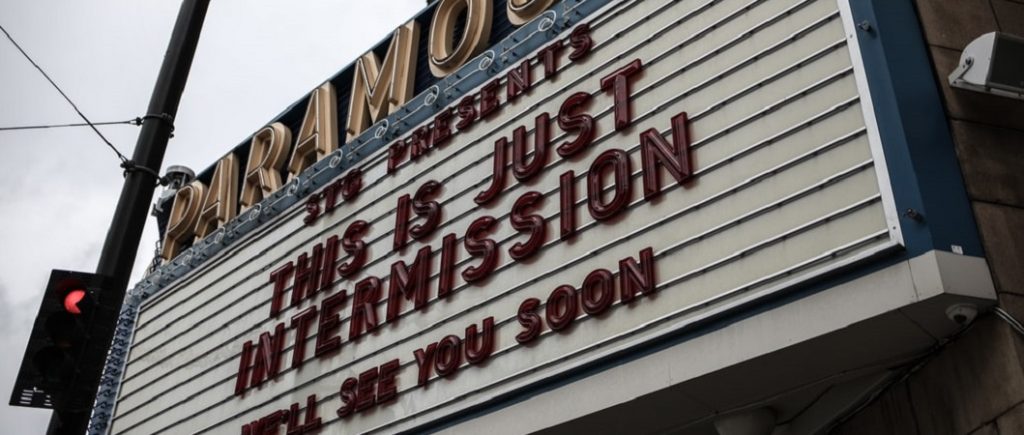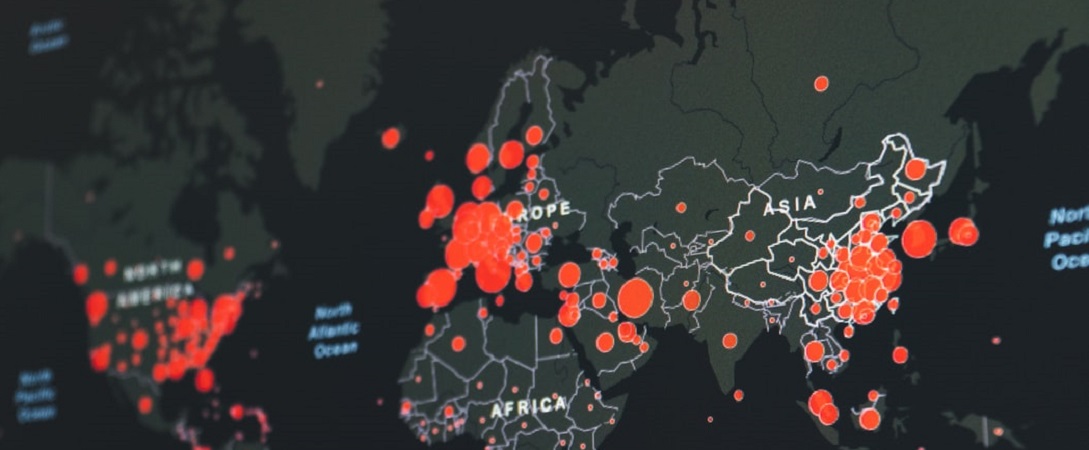Katja Bego, Principal Researcher, Nesta
May 16, 2020
The world has perhaps never been more globalised than under this current lockdown. For
billions, the internet – in many ways globalisation’s greatest triumph –
has become their sole remaining window into the world. Having a Zoom meeting with team
members holed up in their apartments three streets down feels no different than having
a call with colleagues in Singapore or San Francisco. We consume the same information,
as governments across the world copy each others’ COVID-policies wholesale to battle
the same global enemy. But this temporary untethering from physical space will not
last, and as governments begin to chart pathways out of this crisis, the general
tendency seems to be towards a world that will actually be less globalised than
before- a Great Unwinding.
We see similar tensions in other areas
accelerated in this current crisis: will we see the incumbent tech giants use COVID-19
to further solidify their power, or are we entering a period of more government
control? Could the push for further centralisation be counterbalanced by an emergence
of more bottom-up, grassroots redistribution efforts? In this piece, we will explore
some of these competing forces and the different futures for the internet they might
lead us to.
Globalisation versus deglobalisation: the search for sovereignty
The COVID-19 crisis has revealed the fragility of global supply chains and the just-in-time economic model it supports. Supply chains are only as strong as their weakest link, and more governments now feel that the only way to bring more resilience to the system is to reshore elements of production, remove bottleneck dependencies, and diversification across the chain. If this trend persists, it might have interesting implications for the internet. One of the main drivers in the Huawei debate before this crisis was the prohibitive cost of non-Chinese alternatives in the 5G market – might cost become less of a deciding factor in a world where notions of sovereignty and resilience become the leitmotiv? Or will high debt burdens and the looming global recession put these concerns on the backburner?
This search for sovereignty is of course as much a political as an economic one (if it is ever possible to disentangle the two). The internet and related technologies have for several years now been one of the main theatres of geopolitical strive, from misinformation wars to the accelerating technological arms race between China and the United States. China, Russia and others have a long history of beaconing off parts of their domestic internet and pushing national champions. The new European Commission, the self-declared first geopolitical one, has made technology sovereignty a core mission for the EU. Doing so may be the key to re-establishing Europe as an innovation superpower and promoting more ethical alternatives to Big Tech, yet the renewed sense of urgency that the COVID-19 crisis brings to our ambitions also risks further fragmentation of the digital space and the emergence of a de facto multipolar internet.
If we see competing global standards for the next generation of connectivity take hold, we could actually begin to see a real, physical splintering of the net.
China’s changing position in the world will naturally be a driving factor in this decoupling. The more permanent ramifications of China’s whirlwind journey through the crisis – from geopolitical boogeyman to temporary soft-power victor and now back to global boogeyman – remain to be seen. Japan has already announced it will be spending £2 billion on helping Japanese businesses move their production out of China, the US has threatened to cut off bilateral relations, and the UK intelligence community has urged for a radical China rethink. This muscle flexing vis-a-vis Beijing will not only impact physical internet infrastructure and production of devices, but could far more significantly also lead to fragmentation of standards. While 5G has now firmly replaced AI as the geopolitical playball du jour, we will see the real challenges emerge around the development of 6G standards. Further politicisation of this process could well lead to the breakdown of already intricate global governance processes. If we see competing global standards for the next generation of connectivity take hold, we could actually begin to see a real, physical splintering of the net.
But we also see trends in the opposite direction. This accelerated push for supply
chain diversification and rising geopolitical conflict need not necessarily lead to
more deglobalisation, and could even further solidify the internet’s role as the
conduit of international trade and exchange. Production can move to new, third
countries (with rising labour costs in China, this was a process already well
underway), and we could see a renewed belief in trade as a soft power tool to grow
spheres of influence.
Reshoring of production and a reduction in physical
cross-border exchange could also put more of an emphasis on the digital. We might
permanently replace business travel and networking cocktails with video calls.
Coordinating production processes across many globally distributed locations will
require more real-time data sharing. And the unprecedented worldwide collaboration in
research that was spurred by the COVID-19 crisis, could become the new model for
borderless online scientific collaboration.

Centralisation or redistribution of power: the end of the techlash?
The obvious big winner of the COVID-19 crisis so far has been Big Tech. Where most
sectors of the economy have seen demand collapse, many large tech companies are
reporting
record profits, and have been able to use this momentum to further consolidate market share. With
more of us reliant on technology for our daily lives than ever before, we have become
more willing to turn a blind eye to the excesses and ethical shortcomings of these
companies and their business models. The so-called “end of the techlash” would no
doubt be seen as a welcome break after years of negative headlines and mounting public
pressure. But will it turn out to be a temporary respite for the internet giants, or
are we witnessing a more permanent concentration of power over yet more aspects of our
society and economy?
While the global economy is heading for a historic
recession, stocks have held up remarkably well. One force keeping this bear market
– and decoupling from economic reality – going is the relative strength of
the FANG-stocks, which lift up the market as a whole. With famously enormous cash
reserves at their disposal and the expectation that this push for digitisation will
last post-crisis, companies like Alphabet and Apple are considered well-prepared to
weather slumps in consumer demand and digital advertising. Others even profit from the
lockdown: Netflix has seen
new sign-ups soar, as other options for outdoors entertainment have fallen away. Amazon, of course, is
the
chief beneficiary
of an unparalleled boom in online shopping.
Jeff Bezos has so far added 25
billion to
his net-worth
this year, while
60 percent
of UK independent bookstores expect they might not survive this crisis. Netflix was
temporarily
worth more
than ExxonMobil, while the global publishing industry is hemorrhaging jobs, with
newspapers alone expected to lose a staggering
$24 billion over the course of the crisis.
Many brick-and-mortar shops and restaurants will never reopen, and the ones that do
will be increasingly at the mercy of the large tech platforms, as they scramble to
adapt their businesses to a more online world. In a now hypercharged winner-takes-all
economy, the large tech companies will be the ones best-placed to pick up the pieces.
The privileged new class of remote workers can only be sustained because we have access to solid, well-functioning digital tools courtesy of the data barons of the new Gilded Age.
It is not just their sizable battle chests that leaves Big Tech so well positioned in this current crisis. Because credit where credit is due: the privileged new class of remote workers can only be sustained because we have access to solid, well-functioning digital tools courtesy of the data barons of the new Gilded Age. Their robust infrastructures and ability to rapidly scale amidst an explosive rise in demand for collaboration tools and video chat software makes even some of the biggest digital rights advocates secretly glad to have them around. Despite our best intentions, most of us still opt for Zoom or Teams over less reliable open source alternatives. Perhaps it is this new-found appreciation that has given rise to the rather complacent “end of the techlash” narrative: “Maybe Big Tech isn’t so bad after all?”. But it conveniently ignores that the concerns that drove the original techlash, from the erosion of privacy to market failures, are only set to worsen during the current crisis.
None of this means that we’re inevitably headed into a future in which the spoils of
the digital (and increasingly, physical) economy benefit even fewer actors than
before. While it hasn’t seemed likely in recent years that anyone would be able to
break Big Tech’s hold of power over the internet, we do see some seeds for change
sprout as well. As economies around the world begin to open up again,
some governments
are turning their attention back to internet regulation and competition reform with
renewed vigour, newly empowered by the statist interventionism the crisis has allowed
them to engage in.
As the pendulum looks like it might swing away
from Big Business towards Big Government, we must also take note of the more
grassroots developments challenging this centralisation from the bottom up,
particularly those eating up the companies from the inside. Amazon warehouse workers
have been
staging protests over a
lack of virus protection, one of the company’s VPs
resigned
in protest because of whistleblower firings. Instacart shoppers similarly
called in
a strike. Perhaps the biggest scalp yet is the Toronto Quayside redevelopment, the
much-maligned urban renewal cum smart city project, on which Alphabet
subsidiary Sidewalk Labs
pulled the plug
last week. While the cited reason for the cancellation was “unprecedented economic
uncertainty” due to COVID-19, there is no doubt the unrelenting pushback by local
residents and privacy and anti-gentrification activists played no small part in this
decision.

Privacy versus surveillance: a new role of governments?
As governments around the world scramble to rapidly roll out crisis tech solutions they hope might get us out of this quagmire, privacy advocates fear this will lead to the permanent normalisation of intrusive tracking and data collection tools, and so contribute to the further entrenchment of the surveillance state. Human rights are easily brushed aside in times of pandemic, and we have already seen many governments use this crisis as an excuse to push pre-existing (often authoritarian) agendas.
While decisions to deploy these kinds of tools are usually quite deliberate and strategic, surveillance creep is also often the byproduct of governments feeling like they need to keep up with any newfangled technology, just in case it turns out to be the golden ticket. This is partly owed to their tendency towards “solutionism”, tech as a silver bullet for all our problems, but it appears there is more going on in the COVID-19 crisis.
Crisis technology has become a playball in the geopolitical rush to come out on top and be seen as the best-prepared and most innovative. While we have seen a heartening amount of cross-border cooperation, we have also seen countries compete to create the first vaccine, race to build hospitals in less than a week, and engage in an odd form of PPE Potlatch, where giving away medical supplies (even if it means domestic shortages) has become a symbolically important soft power tool. In this context, no country can afford not to have their own contact tracing app, regardless of whether they work or not, because not having one can be seen as falling behind in the innovation race.
We have seen countries compete to create the first vaccine, race to build hospitals in less than a week, and engage in an odd form of PPE Potlatch, where giving away medical supplies (even if it means domestic shortages) has become a symbolically important soft power tool.
By rushing to deploy in this way, governments have put themselves in a difficult
position, forced to play an unfamiliar role as early-adopter and procurer of
experimental tech in the public eye. Some have taken on the difficult task of building
these tools themselves, to differing degrees of success and often skipping due
process. Others have turned to secretive but highly effective tech companies like
Palantir
to do the job for them – another pathway to insidious surveillance creep.
But
we also see the opposite. Never before have we seen so many governments forced to
grapple with difficult privacy and security questions in real-time. We have as a
society perhaps never before engaged in such a public and in-depth debate about
privacy as the one emerging around contact tracing apps. Few would have predicted at
the start of this year that discussions about decentralised data storage or open
source development would make it onto the evening news.
Several
governments have been forced to back down after initially opting for a more
centralised approach, or have tried to increase citizens’ buy-in by involving the
general public in the development process. This learning by doing might well bring
about a more permanent change, where governments find the confidence to take on a more
interventionist and activist role in shaping the technology they want to see. Taiwan
has arguably had among the strongest responses to tackling the COVID-19 crisis, not in
small part because of its
pioneering approach to crisis and civic tech, led by digital minister Audrey Tang. Cities in Germany,
Switzerland and Belgium
have started to run their
own Jitsi-servers, an open source alternative to video conferencing software like
Zoom. With procurement processes now top of mind, more governments might start to
better leverage this estimated 8 trillion annual spend, proactively setting standards
and creating markets for more ethical alternatives.

Reinterpreting resilience: will we move to an economy less grounded in physical space?
So far, in most of the developed world, key systems have held up remarkably well (the staggering lack of attention to the challenges faced in the global south is a topic for another blog altogether). Food supply chains, after some initial hamstering hiccups, have kept supermarket aisles well-stocked; health systems were brought to the brink and sometimes beyond, but have so far not collapsed. The internet and its underlying infrastructures have, impressively, not buckled under the additional strain of remote working and lockdown streaming.
But the durability of these systems in this current crisis must not lull us into a false sense of security moving forward. While resilience will no doubt be the watchword for public and private sector alike in the coming years, it is a term easily repurposed to mean whatever we want it to mean. The post-COVID-19 recovery offers an important opportunity to think about the future robustness of the internet’s underlying physical and social infrastructures.
While the current crisis is often compared to a ‘war’ or the coming climate emergency,
it is not quite representative of the kinds of problems we might soon face. Despite
its human cost and the associated risk of unrest, the virus does not threaten to
destroy the built environment (some
5G poles notwithstanding). When it comes to the internet, the coronavirus is in some ways just a dress
rehearsal; physical shocks to the system will become commonplace as the climate
emergency unfolds and escalating cyber conflict looms.
At the same time,
the fragility of the barely-holding-on economy, of operating at extreme margins and
relying on just-in-time supply chains and work forces that live paycheck-to-paycheck,
has been made crystal clear. A model that affords no slack to respond to unexpected
crises does not only come at substantial human cost, but is simply unsustainable in a
world of rising uncertainty, where climate-induced shocks will only become more
frequent. What will be particularly important to watch is whether these socio-economic
questions will change the way we think about the risks of anchoring ourselves to our
physical surroundings.
Whereas most digital economy workers have fared just
fine working from the safety of their own homes during this lockdown, the gig economy
workers who put themselves at risk to deliver them their daily bowl of ramen have not.
Demand for Ubers and similar ride-sharing companies has
all but collapsed, with drivers losing their already precarious incomes. Airbnb hosts
might never
see their booking numbers return to pre-COVID levels as norms around travel and
hygiene could permanently change. The tech companies themselves have had to lay off
operational and office staff too, and Airbnb is likely to delay its
much-anticipated IPO. Even UK food delivery company Deliveroo, generally considered a winner in this
crisis, has
announced workforce cuts
as many of its key “anchor” restaurants have been forced to shut down under the
lockdown. What these companies all have in common is that they are inextricably tied
to the physical space. In our new world, will we come to see that kind of dependency
as a liability?
But the post-COVID gated community might well be a virtual as well as a material one, where different classes no longer even physically meet.
Of course also before this crisis were the ‘haves’ of this world able to pick up their
bags and settle anywhere they pleased or retreat into the security of well-protected
homes. But the post-COVID gated community might well be a virtual as well as a
material one, where different classes no longer even physically meet. A world of
“contactless delivery”, where the ‘have-nots’ have to brave the dangerous
urban-outside, while the privileged can enjoy the miasma-free countryside, networking
over Zoom-cocktails. This kind of untethering from physical space might mean the death
of
the modern metropolis, and could even spell the end of the geographically-bound nation state (the dream of
the digital identity-portable nationhood crowd realised). All in the name of
resilience- but who for?
But as with every trend discussed in this piece,
there are counter-movements at work. The normalisation of remote work might conversely
also offer up more job opportunities to those living in areas left behind in the
current economy, which could help reduce regional inequality. This could also improve
the affordability of current superstar cities like London, Paris and San Francisco,
which in turn
might add
to their diversity and vibrancy. Similarly, consumers may have heavily relied on
Amazon for their lockdown deliveries, but few would be pleased to return to even
further-hollowed out high streets and sterile city centres. We could well see the
solidarity showcased during this crisis through for example
mutual aid groups and community
support for favourite
mom-and-pop shops and neighbourhood cafes translate in a more permanent reinvigoration
of local communities, tying us more closely to our built and natural
environment.

The Digital Divide: rising inequality of the great equaliser?
The current crisis has in dramatic fashion exposed the perils of the digital divide and resulting economic inequalities. Those in jobs with a strong digital component, that can be done remotely, have been relatively secure. Many of the rest- who were on average already paid less before COVID-19 have found themselves furloughed or on the front-lines as essential workers.
At the same time, finding new employment or signing up for government assistance now more than ever relies on having access to the internet. And as cafes and libraries remain closed during the lockdown, those without home access have lost an important lifeline. The New York Times reports that in many places, parking lots around the few businesses that have remained open are filling up with people desperately searching for free Wifi signal.
The COVID-19 cohort, the children and students who have seen their education interrupted by the global lockdown, will feel the impact on their professional and social outcomes throughout their lives. But we must not forget that it will in particular be those children that do not have access to home computers and reliable internet connections that will feel the pain. Similarly, the best-funded schools and universities can more quickly transition to effective online teaching where others struggle; tech-savvy parents are better able to support their children making most of these new resources.
This is not just a matter of economics. Tech, for better or worse, has become a key component of many countries’ emerging exit strategies. Most of these solutions, such as the much-discussed contact tracing apps, rely on citizens having access to a smartphone with regular internet access. But it is exactly those who are most vulnerable to COVID-19 – the elderly, the disabled, ethnic minorities, and those on the fringes of society – are least likely to own one. How can we make sure these groups are not excluded by design?
In a post-COVID world where not being connected will carry even greater economic and social costs, we could see the gap between the connected and disconnected widen. Richer countries with larger digitised workforces will recover more quickly than those who do not. Workplaces, hedging their bets in case of a second wave or similar future crises, will place more of an onus on digital skills. But we also see the seeds of a growing movement to narrow the gap: previously not always particularly successful One Laptop Per Child initiatives have now been rolled out at rapid pace in for example the UK and The Netherlands. There are new voices calling for a Universal Basic Internet. And with many older and vulnerable people now reliant on tech, accessibility – from video calling and health tech to delivery apps – is no longer optional but the new minimum requirement. Policymakers can do much to support the narrowing of these gaps.

Some final thoughts
The COVID-19 crisis has given us an opportunity to press pause and reassess, with the
emerging dynamics of recent years (debates about privacy, geo-politicisation of
infrastructures, the battle between government and corporate control) now temporarily
playing out in an accelerated microcosm. While it is too soon to know whether the
forces of centralisation or decentralisation, increased inequality or redistribution,
will win in this tug-of-war, what we do know is that the internet will almost
inevitably play a larger role in our lives after this crisis.
But who gets
to control and write the rules for how we use that technology is more malleable.
COVID-19 has laid bare some of the fundamental weaknesses and power imbalances in our
current system, often in expected, but sometimes also in unexpected ways. Rather than
using this crisis as an opportunity to confirm our priors and pre-existing beliefs
about the world, we must recognise that the reality will be far messier, with
competing forces engaged in a constant tug-of-war, moving at different speeds in
different places.
We will probably look back in several years at this
crisis as one of those important hinge moments in history, where the decisions made
today will come to define a new political and economic order. Rather than be mere
spectators looking on as the dice are cast elsewhere, we need to thus make sure we
understand the different complicated trajectories and choices ahead of us, and seize
this opportunity to shape the future internet we want to see.
As part of the NGI Forward project, we will soon be releasing a paper with our vision for the future internet, and the building blocks – both policy levers and technological solutions – we need to get us there. Stay tuned.
